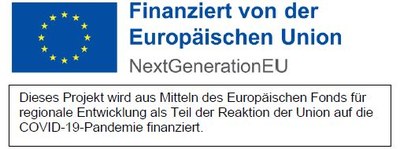REACT-EU

The Center for Materials Research receives financial support from the European Regional Development Fund (ERDF) for the project "Development of infrastructure for sustainable physical-chemical technologies (especially energy technologies)" in the period from 2022-02-07 to 2023-03-31.
Project Description:
Achieving the best possible sustainability of modern technologies is a key task that determines not only long-term ecological and economic success - but increasingly also social acceptance. In the REACT-EU project "Building infrastructure for sustainable physico-chemical technologies (especially energy technologies)" three approaches to the development of sustainable technologies are pursued.
The aim of the project is to strengthen the competence of the ZfM and its working groups in the research and development of sustainable technologies by expanding the instrumental infrastructure in the following areas:
a) Hydrogen/photocatalytic water splitting (RG Chatterjee)
Today, hydrogen is regarded as the most important carbon-free material energy carrier in the future, which is expected to replace carbon-containing fossil energy carriers in the long term. In order to be able to produce hydrogen sustainably as an energy carrier, particularly energy-efficient synthesis processes must be developed, which generally produce hydrogen by splitting water into its components hydrogen and oxygen. A particularly elegant variant of hydrogen synthesis is photocatalytic water splitting. This refers to the direct decomposition of water into hydrogen and oxygen by irradiation with (solar) light.
To investigate fundamental processes on materials for photocatalytic water splitting, a cluster tool consisting of molecular beam epitaxy and atomic layer deposition was set up. The cluster tool is supplemented by a measuring station for operando long-term studies.
b) Electrochemical energy storage/batteries (RG Janek)
Electrochemical energy storage is a particularly sustainable technology, as it allows the direct use of electrical energy from renewable sources for a wide variety of applications - without having to rely on matter-based energy carriers in this chain from source to consumption. In practice, however, unwanted side reactions occur in batteries, leading to unwanted aging and reduction in performance over the lifetime of a battery cell. A high-resolution scanning electron microscopy system was set up to investigate these side reactions, which show only very slight effects in individual charging or discharging steps but accumulate over time. This comprises extensive analytical equipment as well as a special electrochemical measuring station with micromanipulators and a nanomechanics measuring station, both of which can be operated in the electron microscope.
c) Sustainable Propellants for Electric Space Propulsion (RG Klar)
For more than 60 years, JLU has pioneered the field of electric space propulsion. Such propulsion systems are one of the driving technologies contributing to the current massive commercialization of spaceflight.
New international standards are also to be set in the field of electric space propulsion systems for "sustainable space flight". In the long term, sustainable alternatives to xenon as a fuel for ion thrusters must be found. One current candidate is iodine - but because of its chemical aggressiveness, this element places high demands on space simulation facilities for testing in engine operation. The same is true for molecular, non-toxic alternatives made from elements that are not critical to resources. Another concept involves air-breathing thrusters that collect residual gas from the atmosphere in low trajectory and then use it as propellant.
The project has built the test infrastructure for engines that run on such alternative fuels.
